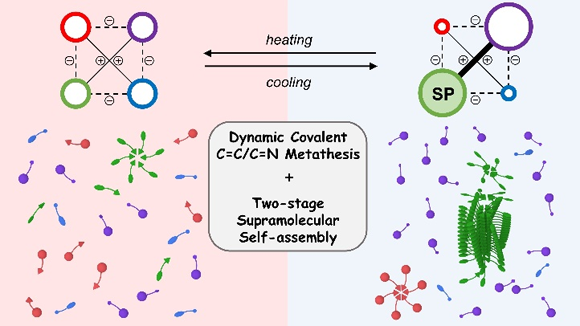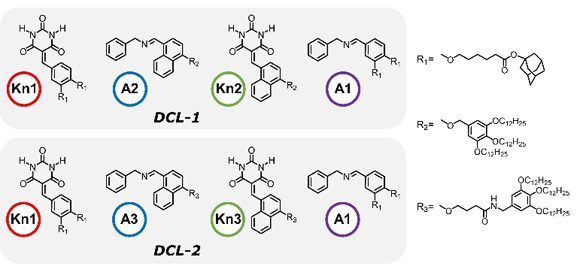Professor Jean-Marie Lehn from Lehn Institute of Functional Materials developed triple dynamic adaptive C=C/C=N combinatorial libraries at low Reynolds number
Source: School of Chemistry
Edited by: Zheng Longfei, Wang Dongmei
Professor Jean-Marie Lehn from the University of Strasbourg is one of the founders of the Lehn Institute of Functional Materials at Sun Yat-sen University, the only institute with the authorization to use his family name of Lehn in the world. He was awarded the Nobel Prize in Chemistry in 1987, due to his contribution to Supramolecular Chemistry. Then he opened up another new research field named Constitutional Dynamic Chemistry (CDC) in 2001 and started to focus on another important dimension of chemical systems, that is, distribution. By taking advantage of dynamic covalent bonds, Prof. Lehn has constructed numerous dynamic combinatorial/covalent libraries (DCLs) which are adaptive to the change of the chemical environment.
Recently, a new research achievement entitled ‘Constitutional Dynamic Selection at Low Reynolds Number in a Triple Dynamic System: Covalent Dynamic Adaptation Driven by Double Supramolecular Self-Assembly’ was made based on the collaboration between Lehn Institute of Functional Materials (LIFM) and Institut de Science et d’Ingénierie Supramoléculaires (ISIS) of University of Strasbourg, and reported in one of the top chemistry journals,
Journal of the American Chemical Society. On the basis of previous research results on the C=C/C=N dynamic covalent metathesis (
J. Am. Chem. Soc. 2018, 140, 5560-5568;
Chem. - Asian J. 2021, 16, 44-48), Prof. Lehn built up a four-membered CDL bearing triple chemical dynamics with temperature adaptivity (Figure 1). Taking DCL-2 as example, the constituents Kn1 and Kn3 could both form hexametric rosette rings by H-bonds under cooling. The rosette rings of Kn3 could continue to stack and form rod-like supramolecular polymers but those of Kn1 could not stack because of the steric hindrance caused by adamantine units. Thus, driven by the energy bias, the constituents could rearrange via the C=C/C=N metathesis and form a new equilibration dominated by Kn3 and obtain constitutional selectivity.


Figure 1. Schematic presentation of the temperature responsive dynamic combinatorial libraries.
It was found in this work that the library could also response to the variation of solvent polarity and present diverse distributions (Figure 2, left). In CHCl
3/cyclohexane=1/9 solvent, DCL-2 exhibit no responsiveness to temperature. In comparison, inn CHCl
3/cyclohexane=3/7 solvent, the system could largely response and show great constitutional selectivity. In addition, the authors systematically studied the partical sizes and viscosity of DCL-2 at low Reynolds number by NMR, DLS, viscometer, and rheometer and characterize the morphology of DCL-2 by AFM and Cryo-TEM (Figure 2, right).
Figure 2. (left) Diverse distributions of DCL-2 controlled by temperature and solvent composition; (right) DLS, AFM, and TEM results.
The first author of this paper is Dr. Ruirui Gu from the Lehn Institute of Functional Materials at Sun Yat-sen University. The corresponding author is Prof. Jean-Marie Lehn. This work was financially supported by the National Natural Science Foundation of China, Guangdong International Science Cooperation Foundation, China Postdoctoral Science Foundation, ERC Advanced Research Grant, ANR Grant DYNAFUN, University of Strasbourg Institute for Advanced Study.
Cite this paper: Ruirui Gu, Jean-Marie Lehn*, Constitutional Dynamic Selection at Low Reynolds Number in a Triple Dynamic System: Covalent Dynamic Adaptation driven by Double Supramolecular Self-assembly,
J. Am. Chem. Soc., 2021, 143, 14136-14146.
Access to the paper:
https://pubs.acs.org/doi/10.1021/jacs.1c04446
